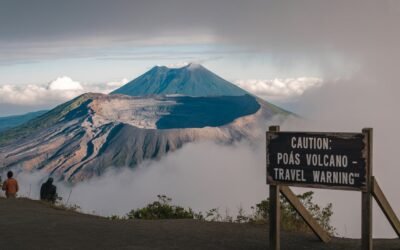Las Vegas Elevation: Why It Matters More Than You Think

When most people hear the words “Las Vegas,” bright lights, casinos, and entertainment come to mind. But one part of the city that isn’t often talked about is its elevation. Located in the desert of southern Nevada, Las Vegas elevation plays an important role in the city’s weather, environment, construction, and even how people feel when visiting. Although this might seem like a small detail, it actually influences many parts of life in the city.
In this article, we’ll explore everything related to Las Vegas elevation—from how high the city sits above sea level to why that matters for health, weather, and everyday life. Using simple language and real-world examples, this guide makes elevation easy to understand, even for a ninth-grade student. So let’s dive in and see how this one number helps shape one of the most exciting places on Earth.
What Is the Elevation of Las Vegas?
The elevation of Las Vegas is about 2,001 feet (610 meters) above sea level. This number might not seem very high, but it places the city at a higher altitude than many other major U.S. cities. For example, New York City sits around 33 feet, and Los Angeles is about 285 feet above sea level.
Although Las Vegas isn’t in the mountains, it lies in a high desert area called the Mojave Desert. This makes its elevation and geography very unique.
How Does Elevation Affect Weather in Las Vegas?
The elevation of a city can strongly affect its climate. Because Las Vegas is over 2,000 feet above sea level and located in the desert, the air tends to be very dry. This leads to a few noticeable weather patterns:
-
Hot Days and Cool Nights: Temperatures rise quickly during the day but drop fast at night.
-
Low Humidity: There is not much moisture in the air, which means sweat evaporates fast, making hot days feel slightly cooler.
-
Rare Rainfall: The elevation, along with desert conditions, makes rainstorms rare but powerful when they do happen.
Therefore, the Las Vegas elevation helps create the extreme temperature changes that visitors and locals experience daily.
Does Las Vegas Elevation Impact Breathing or Health?
At 2,001 feet, Las Vegas elevation is not high enough to cause altitude sickness for most people. However, some visitors, especially those with breathing conditions or sensitive lungs, might feel a slight difference compared to sea level.
People from lower areas might experience:
-
Dry throat or nose
-
Mild shortness of breath during exercise
-
Faster dehydration due to dry air
Luckily, these symptoms are usually mild and go away after a short time. Drinking more water and taking it easy during physical activity can help.
Why Is Elevation Important for City Planning?
Las Vegas is built in a desert valley surrounded by mountains. Because of this, elevation must be considered when planning buildings, roads, and neighborhoods. Engineers and city planners think about:
-
Water drainage: In rare rainstorms, water flows downhill fast.
-
Road design: Roads are shaped to move water away from homes and businesses.
-
Air travel: Planes landing in Las Vegas deal with thinner air due to the elevation, so longer runways are used.
Every building in Las Vegas has been designed with elevation in mind. This helps keep the city safe and functional year-round.
How Does Elevation Affect Air Travel Into Las Vegas?
Airplanes rely on air pressure to generate lift. At higher elevations, the air is thinner, which makes takeoff and landing a bit different than at sea level. McCarran International Airport, now called Harry Reid International Airport, has long runways to help planes safely take off and land.
Additionally, pilots must be trained to adjust for these conditions. Although passengers may not notice a difference, pilots are always calculating the impact of elevation on speed and fuel use.
What Is the Elevation of Surrounding Areas?
Las Vegas isn’t the only elevated area in southern Nevada. The elevation changes quickly depending on where you go:
-
Red Rock Canyon: About 3,700 feet above sea level
-
Mount Charleston: Peaks at 11,916 feet, just an hour from the city
-
Hoover Dam: Located at 1,230 feet
-
Lake Mead: Its surface sits around 1,080 feet when full
These nearby places show how the land rises and falls dramatically across short distances.
Is Las Vegas Elevation Good for Outdoor Sports?
Yes! Many athletes and fitness fans love training in Las Vegas because of its elevation. The slightly higher altitude means there is less oxygen in the air. Over time, training in this environment can improve lung strength and endurance.
Because of this, runners, cyclists, and hikers often enjoy working out here. Moreover, nearby mountains offer more intense elevation changes for those looking to train harder.
Does Las Vegas Elevation Influence Sun Exposure?
Elevation plays a big role in how strong the sun feels. At higher elevations, sunlight is more intense because there is less atmosphere to block ultraviolet (UV) rays. That means sunburns can happen faster, even on cooler days.
So, when you visit Las Vegas, it’s smart to wear sunscreen, sunglasses, and a hat. You might not feel hot, but the sun is stronger than you think.
How Does Elevation Affect Plants and Animals?
Because of its elevation and desert climate, Las Vegas is home to plants and animals that are adapted to dry, high places. Common examples include:
-
Joshua trees
-
Cactus varieties
-
Lizards and snakes
-
Desert rabbits and coyotes
These creatures and plants have evolved to survive with less water and more sun exposure. Their lives are shaped by the same elevation that affects humans.
What Happens During a Flash Flood?
Las Vegas doesn’t get much rain, but when it does, the elevation can cause trouble. Water rushes downhill quickly, and streets can flood in just minutes. That’s why the city has built flood channels, storm drains, and warning systems.
Drivers are warned not to enter flooded roads, because even shallow water can sweep cars away. The risk is higher in lower parts of the city, where water collects.
Why Do Some People Prefer Higher Elevations?
Living at a slightly higher elevation, like in Las Vegas, has some benefits:
-
Fewer bugs: Mosquitoes and other insects don’t thrive in dry, high places
-
Cooler nights: Unlike humid places, the temperature drops at night
-
Exercise boost: The body works a bit harder, which improves stamina
However, some people need time to adjust, especially if they come from sea-level cities.
How Does Las Vegas Elevation Compare to Other Cities?
Let’s compare Las Vegas to other well-known U.S. cities:
| City | Elevation (Feet) |
|---|---|
| Las Vegas | 2,001 |
| Denver | 5,280 |
| Phoenix | 1,086 |
| Los Angeles | 285 |
| New York City | 33 |
| Salt Lake City | 4,226 |
Although Las Vegas is higher than many cities, it’s still considered low elevation compared to mountain towns.
Is Las Vegas Getting Higher or Lower Over Time?
Interestingly, the ground under Las Vegas has been slowly sinking due to groundwater being pumped out. This process is called land subsidence. While it doesn’t affect elevation drastically, it does impact how water flows and where flooding might occur.
Scientists use GPS tools to track these small changes, helping engineers plan for the future.
Do Visitors Feel the Las Vegas Elevation?
Most tourists don’t feel any different when they arrive in Las Vegas. However, some people might notice:
-
Dry lips or skin
-
Mild dehydration
-
Shorter breath during hiking or exercise
Staying hydrated, resting often, and using lotion can make the experience much more comfortable.
What’s the Elevation of the Las Vegas Strip?
The Las Vegas Strip—the heart of the city’s entertainment zone—is slightly lower than the average. It sits around 2,000 feet, with small changes depending on where you are. For example, the southern end is a bit lower than the northern end.
These slight differences aren’t obvious, but city planners and engineers know them well.
FAQS
What is the las vegas elevation above sea level?
Las Vegas sits at approximately 2,001 feet (610 meters) above sea level.
Does elevation affect the weather in Las Vegas?
Yes, it contributes to the hot days, cool nights, and dry air that define the local climate.
Can you get altitude sickness in Las Vegas?
It’s rare, but some people may feel mild effects like shortness of breath or dry mouth.
Is it safe to exercise in Las Vegas elevation?
Yes, just drink water and take breaks—your body adjusts with time.
Why does Las Vegas get flash floods?
The elevation causes rain to rush downhill quickly, leading to sudden floods in low areas.
How does elevation affect building design in Las Vegas?
Engineers consider slope, drainage, and airflow to protect buildings and roads.
Conclusion
The Las Vegas elevation may not be the first thing people notice about the city, but it shapes the entire experience. From weather and health to city planning and adventure, this number affects daily life in many hidden ways. Understanding it helps visitors enjoy their stay and gives locals a deeper appreciation for the land beneath their feet.
So next time you’re walking down the Strip or hiking in Red Rock Canyon, remember—you’re more than 2,000 feet closer to the sky.











